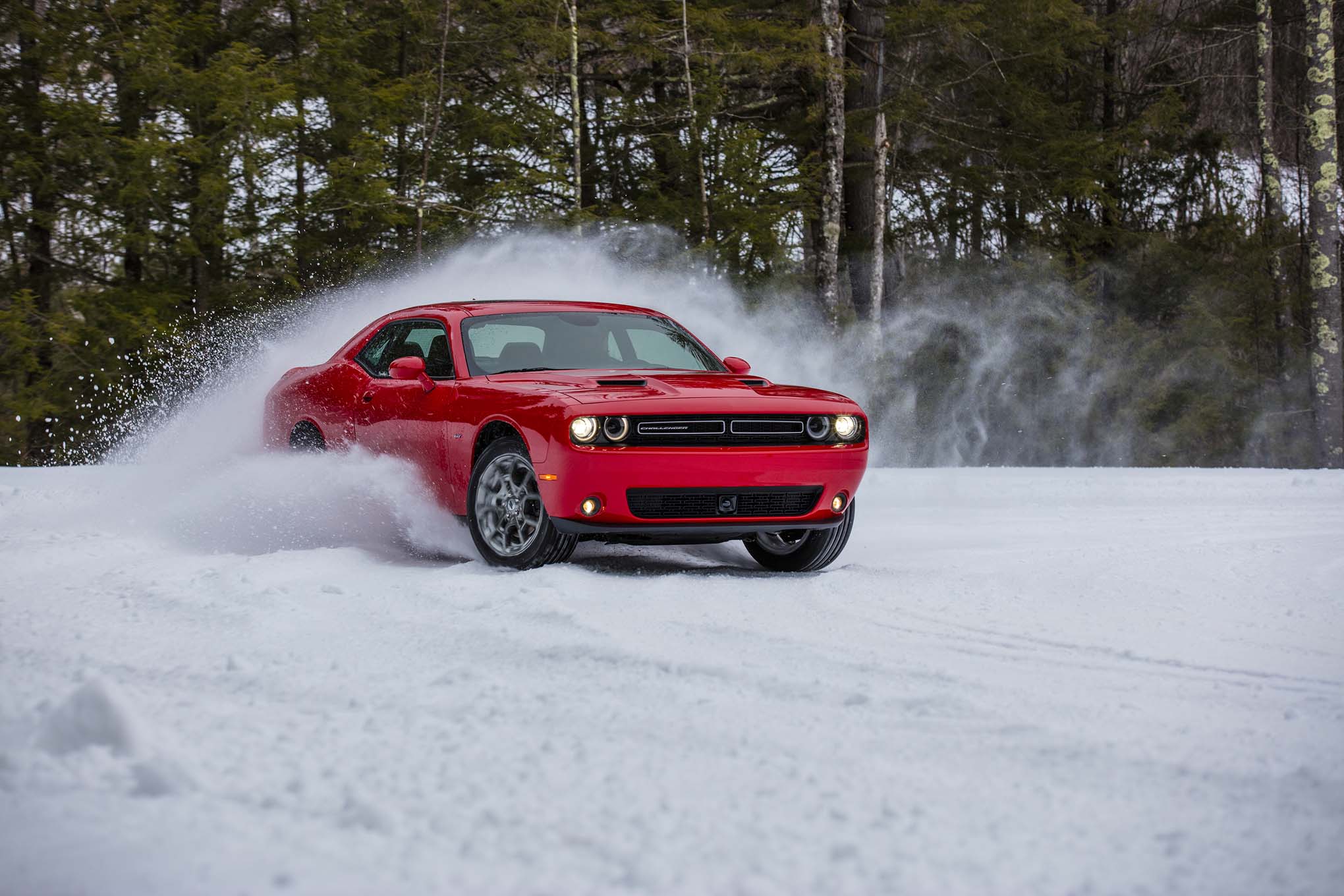Media | Articles
Dodge Challenger GT is the latest car to make AWD history
While the new Dodge Demon has been burning up the internet, another variant of the Dodge Challenger, the GT, has been flying under the radar—even though it can be argued that it is equally as significant to the pony car history timeline. The Challenger GT is, after all, the first production all-wheel-drive pony car.
Although it lacks the performance of its rear-drive Hemi siblings, the Challenger GT is nevertheless an important step in pony car evolution and is also something of a milestone AWD car. The model should help broaden the big coupe’s appeal in Snowbelt markets. While many car buyers likely want an AWD vehicle for that reason, the technology was originally developed to enhance handling performance in all conditions. It was considered pretty exotic on cars like the 1980 Audi quattro (ur-quattro to purists) and the 1990 Porsche Carrera 4.
It seems like most carmakers took a stab at AWD at one point or another. Remember the Pontiac 6000 and Ford Tempo? No? Well, they both offered an AWD option at one point.
More significantly for enthusiasts, there were AWD performance models in all price categories. Some were sales duds and depreciated so far as to be rendered junk. But as we know, one auto enthusiast’s junk is another’s dream car.
The 1966 Jensen FF generally gets credit for offering the first car with what was then called permanent four-wheel drive. Powered by a Chrysler 383-cid big block V-8, the FF was a version of the company’s then-new Interceptor coupe. It was the progenitor of pretty much the entire luxury coupe segment today, since most offer all-wheel drive. (Coincidentally, Ferrari called its first AWD car the FF; the latest version is called GTC4 Lusso.)
Marketplace
Buy and sell classics with confidence
The hardware for the FF came from British company Ferguson Research, which was funded by Massey Ferguson tractor mogul Harry Ferguson. The Ferguson Formula system drove all four wheels, using clutches in the center differential to allow wheel speed variances. The package also featured a form of anti-lock brakes adapted from aircraft landing gear. (In contrast, the Challenger GT system drives the rear wheels most of the time and engages the front wheels when the rear tires slip.)
The Ferguson system was tested on a 1965 Mustang and evaluated by Ford. The prototype resides in the Tampa Bay Auto Museum.
The Jensen FF went away after 1971 after only 320 were built, but the idea of full-time 4WD for passenger cars resurfaced by the end of the decade. Here’s a quick look at some of the most important AWD cars from the technology’s formative years:
1980 AMC Eagle
AMC was expert at stretching its cars well past their shelf lives. In 1979, the company hiked up the then-nine-year-old Hornet Sportabout wagon, gave it a full-time viscous-coupling 4WD system and called it the Eagle. It was, in effect, the first crossover and was a moderate success. A smaller Eagle SX/4 model based on the Spirit compact—a cleverly rehashed Gremlin—followed and did well on the rally circuit. Too bad there was no performance version for the road.
1980 Audi quattro
Also in 1980, at a higher part of the automotive strata, Audi began dominating the international rally circuit, especially any car in the hands of Michèle Mouton, making 4WD a must for that sport. American Audi dealers first offered the quattro in 1983. Today, most Audi models sold in the U.S. are equipped all-wheel drive systems branded as quattro.
1988-89 Mazda 323 GTX
A dozen or so years before the Subaru WRX and Mitsubishi Lancer Evo reached American buyers, Mazda offered a rally homologation model, the 323 GTX. This was the real deal, with a 132-hp turbocharged 1.6-liter 4-banger, full-time 4WD using a lockable center diff, and a spiffed up body. Just over 1,200 were sold over two model years.
Mitsubishi Galant VR4, Eclipse GSX, and 3000 GT
Mitsubishi was rallying with 4WD long before the Evo, and in 1989, it offered its Galant VR4 in America, complete with Mitsubishi’s famous 4G63 turbo 2.0-liter four (195 hp) and all-wheel drive. There was even a four-wheel steering function on this $21,000 sedan. The Galant VR4 was quick, fun, comfortable, and practical. In other words, just what customers look for today in an AWD sport sedan. Mitsubishi was on an AWD roll at the time, also offering the Eclipse GSX with that same powertrain, and then a “poor man’s supercar,” the 3000 GT with a 320 hp twin-turbo V-6. You might remember that one was also sold, with slightly different bodywork, as the Dodge Stealth R/T.
1990 Porsche Carrera 4
The German sports car maker introduced the astonishing and ultra-limited-production 959 supercar in 1986 with a highly sophisticated 4WD system. A simpler, more accessible application arrived for 1990 as the redesigned 964-series 911, known as the Carrera 4. The 4WD made the 911 an all-season sports car for those who feared the older model’s dreaded oversteer. The 4WD system—by now referred to as AWD—has evolved through several iterations, and today about a third of 911 customers choose the Carrera 4 version.
1991 Isuzu Impulse RS
Remember Joe “He’s lying” Isuzu? If not, chances are you won’t remember the Impulse RS. The standard Impulse was a spunky little front-wheel-drive sports coupe, also sold with different styling as the Geo Storm in Chevy dealerships. The RS was its rally car sibling, with a 160-hp turbo four, viscous-coupling all-wheel-drive system with a rear-wheel bias and even a four-wheel steering system. It was quick (0-60 mph in 7 seconds), handled well, and won praise from automotive critics. But only 800 were sold.
What is your favorite model from the AWD’s formative years?


